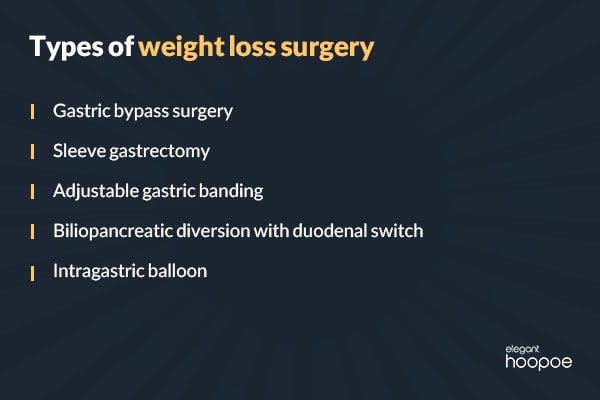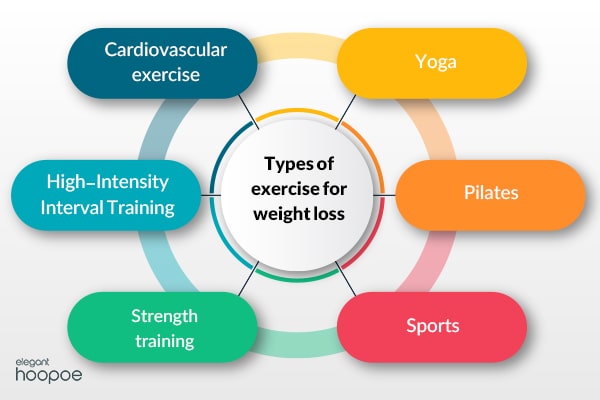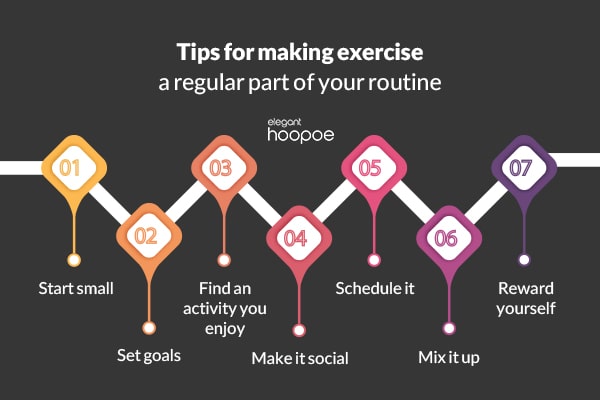Surgical Weight Loss vs Diet and Exercise What is more effective for weight loss? Weight loss is a common goal for many people, and there are numerous approaches to achieving it. Two popular methods are weight loss surgery and working out. While both options can lead to significant weight loss, they differ in their approach and potential outcomes.
Weight loss surgery involves a variety of surgical procedures that are designed to reduce the size of the stomach or alter the digestive tract to limit the amount of food that can be consumed and/or absorbed. Today, with the advancement of science and technology, there are many options for weight loss without surgery, which helps to reduce the desire to eat and consume food. Working out, on the other hand, is a non-surgical approach that involves engaging in physical activity to burn calories and improve overall fitness.
Each method has its own unique set of benefits and risks, and the choice between the two depends on a variety of factors, such as an individual’s health status, goals, and preferences. In this article on elegant hoopoe, we’ll explore the differences between weight loss surgery and working out, and provide information to help you determine which approach may be best for you.
Invasive Weight loss methods
Weight loss surgery, also known as bariatric surgery, is a surgical procedure that aims to help individuals with obesity lose weight by reducing the size of their stomach and/or altering the digestive system’s ability to absorb nutrients.
The procedures can be categorized into three main types: restrictive, malabsorptive, or a combination of both. Restrictive surgeries reduce the size of the stomach, while malabsorptive surgeries reroute or remove parts of the digestive tract. Combination surgeries combine both of these techniques. Weight loss surgery is typically reserved for individuals who have a BMI over 40, or a BMI over 35 with obesity-related health issues, and have not had success with other weight loss methods.

What are some common weight loss mistakes? Avoid them at all costs.
Types of Bariatric surgery
There are several types of weight loss surgery, each with its benefits and risks. In this part of weight loss surgery vs working out, we articulate some of the most common types of weight loss surgery:
- Gastric bypass surgery: This procedure involves creating a small stomach pouch and rerouting a portion of the small intestine to the pouch. This limits the amount of food the stomach can hold and reduces the number of calories the body absorbs.
- Sleeve gastrectomy: This procedure involves removing a large portion of the stomach to create a smaller stomach pouch. This limits the amount of food that can be consumed and helps individuals feel full faster.
- Adjustable gastric banding: This procedure involves placing an inflatable band around the upper part of the stomach to create a small stomach pouch. The band can be adjusted to control the size of the pouch and the rate at which food is digested.
- Biliopancreatic diversion with duodenal switch: This procedure involves removing a large portion of the stomach and rerouting the small intestine to reduce the amount of food that can be absorbed by the body.
- Intragastric balloon: This is a non-surgical weight loss procedure that involves placing a saline-filled balloon in the stomach to create a feeling of fullness and reduce the amount of food that can be consumed.
Read more: How to lose belly fat effectively? | Best tips for diet and work put session!
It’s important to note that each type of weight loss surgery has its benefits, risks, and considerations. It’s important to work with a qualified healthcare provider to determine which type of weight loss surgery is right for you.

Effective workouts for weight loss
There are lots of workouts and most people can try each one of them however these are the best exercises to lose weight for both men and women.
- Cardiovascular: Also known as cardio, this type of exercise raises your heart rate and burns calories. Examples include running, walking, cycling, swimming, and dancing.
- High-Intensity Interval Training (HIIT): HIIT involves short bursts of intense exercise followed by periods of rest. This type of workout is effective for weight loss and can be done with bodyweight exercises, equipment like kettlebells, or machines like treadmills or rowing machines.
- Strength training: Strength training helps build muscle, which can boost your metabolism and increase your calorie burn even when you’re not working out. Examples include lifting weights, doing bodyweight exercises like push-ups and squats, or using resistance bands. Do you want to know how to melt fat? In addition to a balanced diet, exercise is also critical for melting fat. Combining cardiovascular workouts with strength training can boost metabolism, increase muscle mass, and promote fat burning.
- Yoga: Yoga can be a great form of exercise for weight loss, as it can improve flexibility, strength, and balance while also reducing stress. Some styles of yoga, such as power yoga or vinyasa, can also be quite intense and provide a good cardiovascular workout.
- Pilates: Pilates is a form of work out that focuses on strengthening the core muscles and improving posture. While it may not burn as many calories as some other types of exercise, it can still be an effective part of a weight loss plan.
- Sports: Playing sports like basketball, soccer, or tennis can be a fun way to get exercise and burn calories. These activities can also improve coordination and provide a social outlet.

Surgical Weight Loss or Diet and Exercise?
Weight loss surgery and working out are two approaches to weight loss that can be effective for individuals who are struggling with obesity.
- Approach: Weight loss surgery is a surgical procedure that alters the digestive system to reduce the amount of food a person can consume or absorb. Working out, on the other hand, involves engaging in physical activity to burn calories and improve overall fitness.
- Weight loss results: Weight loss surgery can result in significant weight loss, with some individuals losing up to 60% of their excess weight within the first year. Working out can also result in weight loss, but the results may be more gradual and can vary depending on the individual’s exercise regimen and diet.
- Health benefits: Weight loss surgery can have significant health benefits, including reducing the risk of chronic diseases such as type 2 diabetes, high blood pressure, and heart disease. Working out can also provide health benefits such as improved cardiovascular health, increased muscle mass, and improved mental health.
- Risks and complications: Weight loss surgery carries the risk of complications such as bleeding, infection, and blood clots, as well as long-term risks such as malnutrition and digestive problems. Working out carries a lower risk of complications but can result in injuries such as strains, sprains, and fractures.
- Cost: Weight loss surgery can be expensive and is often not covered by insurance. Working out, on the other hand, can be relatively inexpensive and can be done at home or in a gym.
- Lifestyle changes: Both weight loss surgery and working out require lifestyle changes to achieve and maintain weight loss. Weight loss surgery requires significant dietary changes and may limit the types and amounts of food that can be consumed.

Weight Loss Surgery vs Working Out: Pros and cons of each approach
Both weight loss surgery and working out have their advantages and disadvantages, and the best approach for weight loss will depend on the individual’s goals, preferences, and health status. It’s important to consult with a healthcare provider or a certified personal trainer to determine the best approach for achieving weight loss goals.
Pros and cons of weight loss surgery
pros
- Rapid weight loss: Weight loss surgery can lead to rapid weight loss, with some individuals losing up to 60% of their excess weight within the first year.
- Improved health: Weight loss surgery can improve or resolve health conditions such as type 2 diabetes, high blood pressure, and sleep apnea.
- Long-term results: Weight loss surgery can provide long-term weight loss results.
Cons
- Surgical risks: Weight loss surgery carries the risks of complications such as bleeding, infection, and blood clots.
- Cost: Weight loss surgery can be expensive and is often not covered by insurance.
- Long-term maintenance: Weight loss surgery requires lifelong dietary changes and monitoring to maintain weight loss.
Not everybody can undergo surgery to shed some pounds and the doctors will decide if a certain type of procedure is good for a patient or not. Beside these surgeries there are new non-invasive weight loss treatments that you can try to shape your body faster.
Pros and cons of working out
Exercise is an important component of weight loss and can provide numerous benefits for overall health and well-being for individuals looking to lose weight. Incorporating regular exercise into a weight loss plan can lead to long-term weight loss success and improved quality of life.
Pros
- Increased calorie burning: Exercise can help burn calories, which can contribute to weight loss. This is because when we exercise, our bodies use energy to fuel our movements, which can lead to a higher calorie burn throughout the day.
- Improved metabolism: Regular exercise can improve our metabolism, which can help us burn calories more efficiently even when we are not exercising.
- Preserved muscle mass: When we lose weight, we often lose muscle mass as well as fat. Exercise can help preserve muscle mass, which can lead to a more toned and fit appearance.
- Reduced risk of chronic disease: Exercise has been shown to reduce the risk of chronic diseases such as heart disease, type 2 diabetes, and some forms of cancer.
- Improved mental health: Exercise has been shown to improve mental health by reducing stress and anxiety, improving mood, and boosting self-esteem.
- Enhanced weight loss results: When combined with a healthy diet, exercise can enhance weight loss results and help individuals achieve their weight loss goals more quickly.
- Lower cost: Working out can be relatively inexpensive and can be done at home or a gym.
Cons
- Gradual weight loss: The weight loss results of working out may be more gradual and can vary depending on the individual’s exercise regimen and diet.
- Time commitment: Working out requires a commitment of time and effort to achieve results.
- Risk of injury: Working out carries the risk of injuries such as strains, sprains, and fractures.
Diet and exercise vs working out: which is better?

The approach that is right for you will depend on your individual goals, preferences, and health status. Here are some factors to consider when deciding which approach to take for weight loss:
- Health status: If you have health conditions such as type 2 diabetes or high blood pressure, weight loss surgery may be a more effective approach to improving your health.
- Weight loss goals: If you have a significant amount of weight to lose, weight loss surgery may provide more rapid and significant weight loss than working out.
- Lifestyle preferences: If you enjoy physical activity and have the time and motivation to commit to regular workouts, working out may be a more suitable approach for you.
- Cost: Weight loss surgery can be expensive and is often not covered by insurance while working out can be relatively inexpensive.
- Risks and complications: Both weight loss surgery and working out carry risks and potential complications, so it’s important to consider these when deciding on an approach.
It’s important to remember that weight loss is not only achieved through exercise but also a healthy diet and lifestyle habits. Combining exercise with a healthy diet can provide the most effective weight loss results. Working with a healthcare provider or a certified personal trainer can also guide the appropriate amount and type of exercise needed to achieve weight loss goals.

Tips for making exercise a regular part of your routine
Making exercise a regular part of your routine can be challenging, but with some simple strategies, it can become a habit that you enjoy and look forward to. Here are some tips for making exercise a regular part of your routine:
- Start small: Don’t try to do too much too soon. Start with just a few minutes of exercise per day and gradually increase the time and intensity.
- Set goals: Setting realistic and achievable goals can help keep you motivated and on track. Start with small goals and work your way up to more challenging ones.
- Find an activity you enjoy: If you don’t enjoy the exercise you’re doing, it’s unlikely that you’ll stick with it. Experiment with different types of exercise until you find something you enjoy.
- Make it social: Exercise with a friend or join a fitness class or group. Having a workout partner or community can make exercise more enjoyable and help keep you accountable.
- Schedule it: Treat exercise like any other appointment and schedule it into your day. Make it a priority and don’t let other things get in the way.
- Mix it up: Variety can keep exercise interesting and prevent boredom. Try different types of exercise, such as cardio, strength training, or yoga.
- Track your progress: Keep track of your workouts and progress. Seeing improvement can help motivate you to continue.
- Reward yourself: Celebrate your successes and reward yourself for reaching your goals. This can help keep you motivated and make exercise more enjoyable.
Remember that consistency is key when it comes to exercise. Making it a regular part of your routine can take time and effort, but the benefits to your health and well-being are well worth it.
Surgical Weight Loss vs Diet and Exercise: Concluding Remarks
At the end of weight loss surgery vs working out, we note that weight loss surgery is typically recommended for individuals who are severely overweight or have obesity-related health issues, and it can lead to significant weight loss in a relatively short amount of time. However, it is a major surgical procedure that carries risks and requires a significant commitment to lifestyle changes to maintain weight loss.
Working out, on the other hand, is a non-surgical approach that can be effective for individuals at a range of fitness levels. It offers a variety of physical and mental health benefits beyond just weight loss, such as increased strength, improved cardiovascular health, and reduced stress. While working out may not lead to the same rapid weight loss as weight loss surgery, it can be a sustainable approach for maintaining a healthy weight over time.
Ultimately, the choice between weight loss surgery and working out will depend on a variety of factors, including an individual’s health status, goals, and preferences. A consultation with a healthcare professional can help determine which approach is best suited for a particular individual.
If you are bored with programs and diets! You can lose 25% of your fat thickness in just one 15-minute session with elegant hoopoe slimming devices! We are a slimming clinic operating in UAE, Dubai, Jumeirah 2. We look forward to meeting you to get you into the body you’ve been dreaming of.







